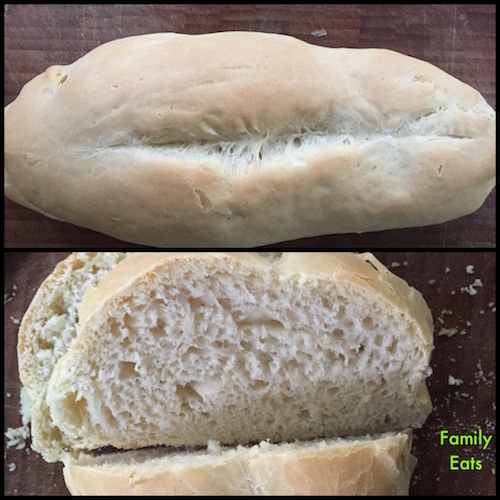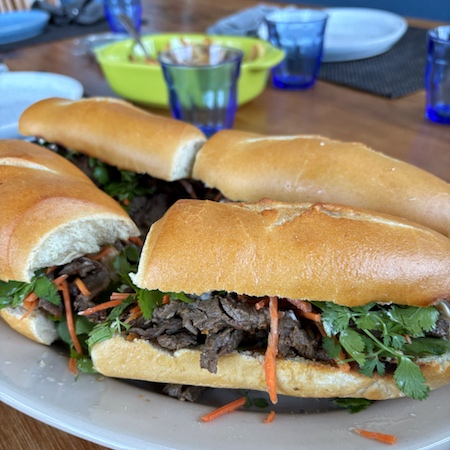During my 12 years living in Miami I fell in love with Pan Cubano with its crisp crust and lightly textured inside, it served as the perfect complement for Pan con Lechon (Cuban pork sandwich), or my favorite traditional Cuban sandwiches, as well as a a breakfast bread when served alongside some fruit and eggs, and spread with some guava paste.
I’ve been out west for more than a decade, and have yet to find a veritable likeness in my day-to-day ‘travels.’ But my recent trip to Cuba reminded me of how much I enjoyed this bread.
Its distinctive taste comes from the starter (which is made the day before) and the use of lard. Of course you can substitute with solid vegetable shortening, but if you want to best replicate the real thing, it is the lard that adds to the texture.
- Starter Ingredients (make a day ahead)3/4 tsp active dry yeast(1/3 envelope)
1/3 cup warm water
1/3 cup bread or all-purpose flourThe day before baking; mix the starter ingredients, dissolving the yeast in the water first. You want a thick paste when you add the flour. Cover bowl with plastic wrap and let “ripen” in refrigerator for 24 hours. Leftover starter will keep for several days in the refrigerator and can be frozen.Dough Ingredients4-1/2 tsp active dry yeast – (2 envelopes or 2 cakes of compressed yeast)
1 Tbsp sugar
1-1/2 cups warm water
3 to 4 Tbsp lard or solid vegetable shortening, at room temperature
1/2 batch starter (see above recipe)
1 Tbsp salt
4 to 5 cups bread or all-purpose flour
Dissolve yeast and sugar in 3 tablespoons of water in a large mixing bowl. When the mixture is foamy (5 to 10 minutes), stir in the lard, the remaining water, and the 1/2 batch of starter.
Mix well with your fingers or a wooden spoon. Stir in salt and flour, 1 cup at a time. You want to get a dough that is stiff enough to knead. You can also mix and knead in a mixer fitted with the dough hook or in a food processor fitted with the double blade, as the processor dough hook will not handle this job easily.
Turn dough onto a lightly floured work surface and knead until smooth and elastic, about 6 to 8 minutes, adding flour as necessary. The dough should be pliable and not sticky.
Transfer to a lightly oiled bowl, cover and let rise in a warm, draft-free spot until it doubles its’ bulk, about 45 minutes. Punch down.
To form the loaves, divide the dough in 4 pieces. Roll out each to form a 14-inch long tube, with rounded ends (sort of like a long meat loaf) Put 2 of the loaves on a baking sheet, about 6 inches apart. Cover with dampened cotton dish towels and let rise in warm, draft-free spot until double their bulk, about 1 hour. If you want to let it rise at a slower pace, you can do it in a cooler spot and even in the refrigerator, but give it 3 to 4 hours instead.
Preheat oven to 350 F
[Cuban bread is distinguished by the palm frond placed lengthwise down its middle prior to baking, its length (almost 3 feet), and its somewhat rectangular shape]
In the absence of a palm frond, lay a dampened piece of thick kitchen string or twine (about 1/8 ” thick) all along the top length of the loaf. Bake until the breads are lightly browned on top and sound hollow when lightly tapped, about 30 minutes.
Let them cool slightly and remove the strings. They will leave a distinct little ridge on top. Transfer loaves onto a wire rack for cooling. Yields 4 loaves.Save
Save



